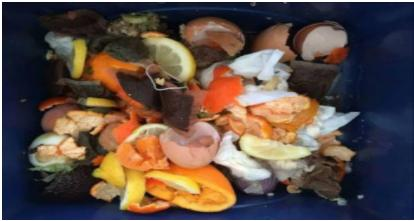
What are biodegradable pollutants?


Answer
411.3k+ views
Hint: The pollutants are the unwanted substances that cause harm to the environment. They contaminate the air, water and land. The pollutants are categorized into two types on the basis of their decomposition by bacteria- biodegradable and non-biodegradable pollutants.
Complete answer:
The biodegradable pollutants are the substances that can be degraded into simple natural components after some time. The microorganisms are involved in the degradation of these substances. These substances can be decomposed by some methods such as composting method, anaerobic digestion and aerobic digestion. They are not much harmful for the environment. Hence, they are ecofriendly.
Most of the biodegradable pollutants are organic but some can be inorganic such as gypsum. The biodegradable substances include-
- Domestic wastes such as kitchen wastes, paper, cloth, human excreta etc.
- Sewage contains organic matter that can be degraded by bacteria.
- Agricultural wastes
- Animal wastes such as cow dung
- Plant products such as flowers, dried leaves, wood etc.
- Green waste
- Slaughter house waste
- Some plastics that are made from floral substances are also biodegradable.
The biodegradable substances usually do not cause pollution. But sometimes, they become harmful if do not disposed properly. The methane is released from the landfill sites due to anaerobic fermentation that contributes to climate change.
The biodegradable pollutants can be used for many purposes. They can be used for biogas production which acts as a source of fuel and electricity. They can be used for composting. They act as a natural fertilizer that improves the fertility of soil by adding nutrients to it.
Note: The substances that cannot be broken down into simpler substances even after a long time of their disposal are called non-biodegradable substances. Pesticides, lead and mercury are some examples. As they remain in environment for a long time, they are very harmful and cause pollution.
Complete answer:
The biodegradable pollutants are the substances that can be degraded into simple natural components after some time. The microorganisms are involved in the degradation of these substances. These substances can be decomposed by some methods such as composting method, anaerobic digestion and aerobic digestion. They are not much harmful for the environment. Hence, they are ecofriendly.
Most of the biodegradable pollutants are organic but some can be inorganic such as gypsum. The biodegradable substances include-
- Domestic wastes such as kitchen wastes, paper, cloth, human excreta etc.
- Sewage contains organic matter that can be degraded by bacteria.
- Agricultural wastes
- Animal wastes such as cow dung
- Plant products such as flowers, dried leaves, wood etc.
- Green waste
- Slaughter house waste
- Some plastics that are made from floral substances are also biodegradable.
The biodegradable substances usually do not cause pollution. But sometimes, they become harmful if do not disposed properly. The methane is released from the landfill sites due to anaerobic fermentation that contributes to climate change.
The biodegradable pollutants can be used for many purposes. They can be used for biogas production which acts as a source of fuel and electricity. They can be used for composting. They act as a natural fertilizer that improves the fertility of soil by adding nutrients to it.
Note: The substances that cannot be broken down into simpler substances even after a long time of their disposal are called non-biodegradable substances. Pesticides, lead and mercury are some examples. As they remain in environment for a long time, they are very harmful and cause pollution.
Latest Vedantu courses for you
Grade 9 | CBSE | SCHOOL | English
Vedantu 9 CBSE Pro Course - (2025-26)
School Full course for CBSE students
₹35,000 per year
Recently Updated Pages
Express the following as a fraction and simplify a class 7 maths CBSE

The length and width of a rectangle are in ratio of class 7 maths CBSE

The ratio of the income to the expenditure of a family class 7 maths CBSE

How do you write 025 million in scientific notatio class 7 maths CBSE

How do you convert 295 meters per second to kilometers class 7 maths CBSE

Write the following in Roman numerals 25819 class 7 maths CBSE

Trending doubts
State and prove Bernoullis theorem class 11 physics CBSE

What are Quantum numbers Explain the quantum number class 11 chemistry CBSE

Write the differences between monocot plants and dicot class 11 biology CBSE

1 ton equals to A 100 kg B 1000 kg C 10 kg D 10000 class 11 physics CBSE

State the laws of reflection of light

One Metric ton is equal to kg A 10000 B 1000 C 100 class 11 physics CBSE




